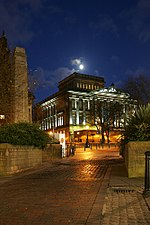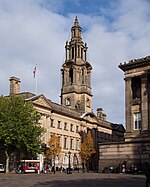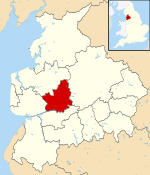Preston Minster
19th-century Church of England church buildingsAnglo-Catholic church buildings in LancashireChurch of England church buildings in LancashireChurches completed in 1855Churches in Preston ... and 3 more
Gothic Revival architecture in LancashireGothic Revival church buildings in EnglandGrade II* listed churches in Lancashire

Preston Minster, formally the Minster Church of St John the Evangelist, is in Church Street, in the centre of Preston, Lancashire, England. From its origin it has been the parish church of Preston. It is an active Anglican church in the deanery of Preston, the archdeaconry of Lancaster and the diocese of Blackburn. Its benefice is united with that of St George, Preston. St John's is recorded in the National Heritage List for England as a designated Grade II* listed building.
Excerpt from the Wikipedia article Preston Minster (License: CC BY-SA 3.0, Authors, Images).Preston Minster
Church Street, Preston Avenham
Geographical coordinates (GPS) Address Website External links Nearby Places Show on map
Geographical coordinates (GPS)
| Latitude | Longitude |
|---|---|
| N 53.7585 ° | E -2.6962 ° |
Address
St John's Minster
Church Street
PR1 3BT Preston, Avenham
England, United Kingdom
Open on Google Maps











